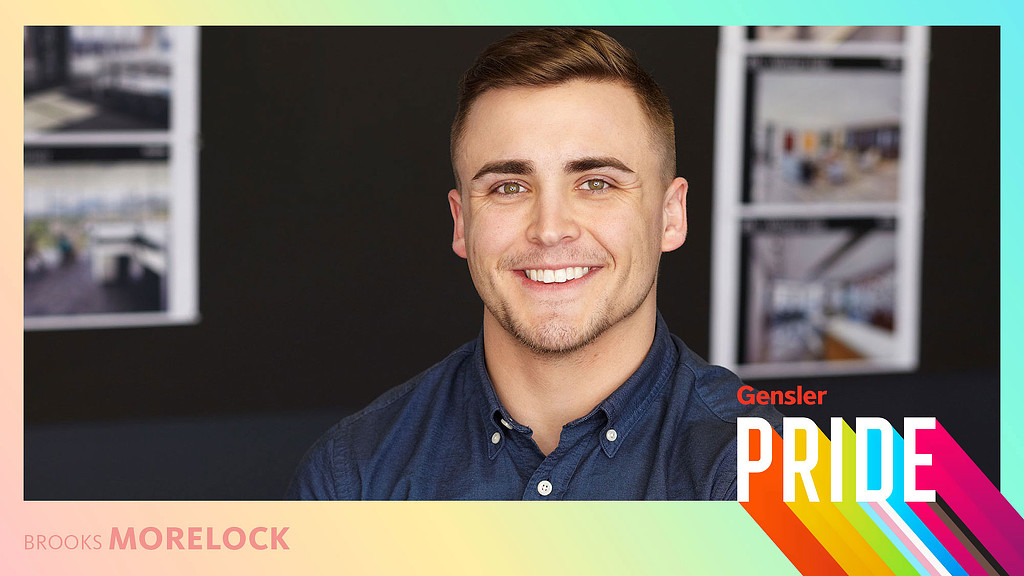Gensler Voices: Brooks Morelock, Gensler New York
June 25, 2021
This Q&A is part of a series of interviews with Gensler architects, designers, and others in the firm about their career journey, and the impact that design and architecture can have on our communities and the human experience. Here, we sit down with Brooks Morelock, design director, Gensler New York:
What does Pride mean to you?As queer people, so much of our early life is masking major parts of our identity so that we can more easily assimilate into the mainstream. Pride has always symbolized a rejection of that mask — a time when we can step onto the global stage as our most authentic selves.
What was an early experience that influenced your career?I have always been influenced by women in leadership and otherness in leadership — anything that is a rejection of the norm. I have always admired the confidence it takes to stand in a room where you’re not like everyone else and to use your otherness as an asset, unapologetically.
How can architecture and design can advance wellness, equity, and inclusion?It’s said that you can’t be what you can see. As designers of space, it is our job to elevate under-represented voices. We must spotlight queer artists and the brilliance of diversity in our community. The starting block was the rainbow flag in the storefront to subtly communicate a safe space for queer people. We can only go up from there. Showcase love in every shape and variety. Build spaces that amplify, rather than divide.
What role does architecture and design play in shaping the minds of the future generations?From our earliest experiences in autonomous space (pre-school/elementary education), the gender binary is reinforced. We ask children to identify their selves immediately and absolutely. With design, we can delay and deemphasize the importance of that gender identity construction until the next generation matures safely and inclusively.
The most important thing I've learned as an architect/designer is...There is always room for improvement. With every space I design, I find more and more opportunities to address the unrepresented. The design of public space is a major statement and reflects your values in a major way. I want to be on the right side of that statement.
If you could choose anyone, who would you like to design a project for?I’m on the Executive Board of the OUT Foundation alongside transgender activist and CrossFit Athlete Chloie Jonsson and Founder Will Lanier. In 2019, we completed an inclusive restroom/locker room design charette with Athlete Ally. I would love to build the prototypical inclusive restroom of the future with my LGBTQ+ partners at the OUT Foundation.
Name a building or space that every designer should see in person.The National Museum of African American History and Culture in Washington, D.C. The space is equitable, accessible, and politically inclusive, on top of being a work piece of architecture.
For media inquiries, email .
